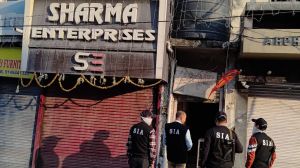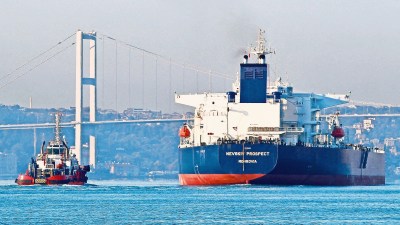Neeraj Bhati has one enduring memory from his childhood. He and his friends would bunk class, go to the banks of Yamuna and jump into its waters for a swim.
To avoid his mother knowing and getting angry, he says, he would shave off his head. “She (mother) would otherwise find out from my wet hair,” he recalls.

He is 35 now. “No child can go for a swim in Yamuna. It’s a cesspool now,” he adds.
Sitting in a dungy shed ostensibly for cattle in Jagatpur village in Wazirabad right on the banks of Yamuna, Bhatti’s face lights up as he recounts his juvenile escapades.
His mother Veervati (59), seated on a cot nearby, listens curiously. “Whenever I would recall this memory from my childhood, it would brighten my mood. But now it also makes me sad. That river of my childhood doesn’t exist anymore,” he says.
“Yamuna was much cleaner 30 years ago than it is today,” he adds.
The Yamuna and its polluted waters have become an issue during this poll campaign with warring parties AAP and BJP engaging in a bitter blame game. Last month, AAP national convenor Arvind Kejriwal accused the BJP-led Haryana government of deliberately “poisoning” the waters of Yamuna and thus Delhi’s water supply. Soon, the debate moved to the polluted waters of the river.
Story continues below this ad
The Yamuna meanders for around 52 km inside the National Capital Territory of Delhi. The river’s path is divided into three stretches that includes the 22 km from the Wazirabad Barrage to the Okhla Barrage.
Bhatti’s mother Veervati says she has lived on the banks of Yamuna all her life. “It is now a nallah,” she says. “I too remember taking a bath in the river during summer… also taking a dip on auspicious days.”
N D Sharma (47) runs a chemist store in Wazirabad. He says that the villagers living close to the river share a close bond with it. “It is a holy river and people share a bond with it… it’s like mother…,” he says. “Pollution is an issue that has been ignored for too long. It was talked about by the (political) parties because of the elections. It’s a mere political stunt and won’t yield any results. People are aware of this.”
A doctor running a small clinic in Jagatpur village talks about skin infections that have become “very common” during the recent years. “Whenever villagers take a dip in the polluted river, they complain of rashes and itching,” he says. “I get a lot of such cases during Chhath Puja.”
Story continues below this ad
Majority of the villagers, he says, are dairy workers or farmers. “…no government has ever addressed this issue properly,” the doctor, who didn’t want to be named, says. “Look at the condition of roads here…. the drains are all clogged… nobody here expects the government to solve the pollution crisis.”
Though the river dries up to a trickle for almost nine months a year, the acrid odour emanating from its polluted waters is normal for people in Chilla village. They farm vegetables on the floodplains. Every morning, they head to the vegetable markets in East Delhi to sell their produce – brinjals, spinach, cauliflower, coriander and fenugreek.
Barely a few metres away from the Yamuna, Gita Devi (37) is busy washing her kitchen utensils with water from a plastic bottle. There is a vast mustard field in full bloom near her jhuggi. “When the river floods, this entire field is submerged. Water reaches our home too,” Devi says.
For the residents here, however, the looming threat of demolition by the Delhi Development Authority to make way for a riverfront is the bigger worry. “Every time there is a flood, we move away from the river and live in tents till the waters recede… We are pained that our leaders do not even think of us or help us find safe homes,” says Amar Chand (65), a daily wage labourer.









